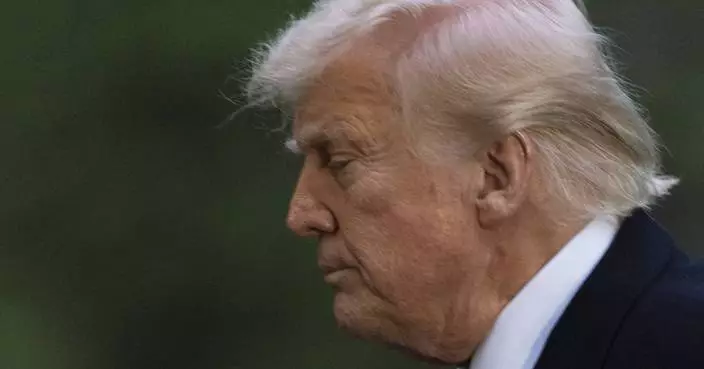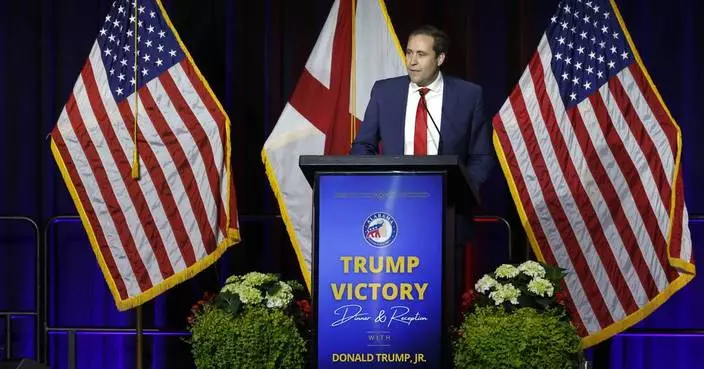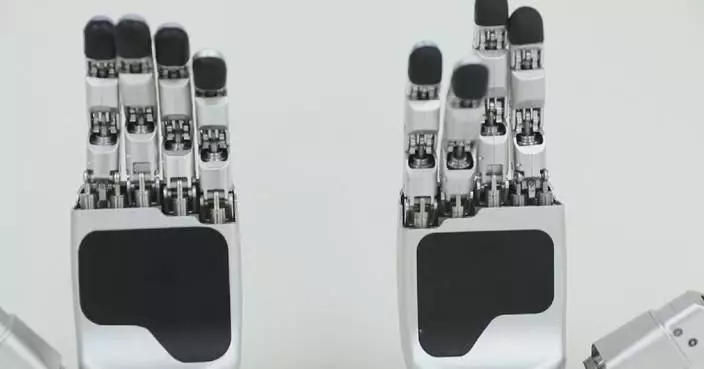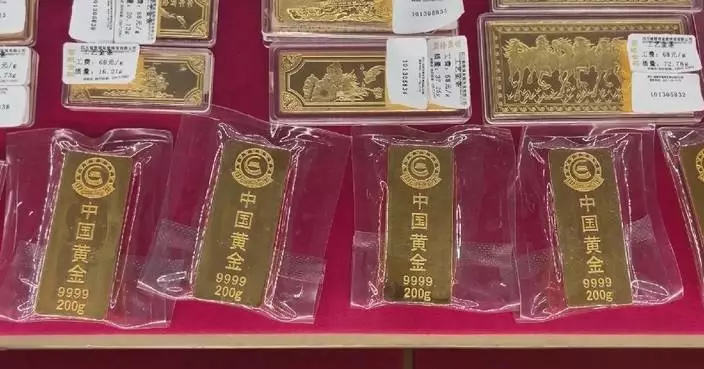PALM BEACH, Fla. (AP) — Steelers owner Art Rooney II says there are “positive signs” that Aaron Rodgers will play in Pittsburgh.
The four-time NFL MVP worked out recently with new Steelers wide receiver DK Metcalf after previously visiting the team.
“We keep hearing that he’s heading in our direction so that seems to be all signs are positive so far,” Rooney told reporters at the NFL meetings on Tuesday.
Steelers coach Mike Tomlin said Monday that he’s staying in touch with Rodgers and is comfortable with Mason Rudolph as the starting quarterback.
“That’s why we brought him back,” Tomlin said. “I’m comfortable with that. And we’ve been there before.”
The Steelers allowed Russell Wilson (Giants) and Justin Fields (Jets) to leave in free agency and brought back Rudolph. Pittsburgh hasn’t won a playoff game since reaching the AFC title game following the 2016 season.
The Steelers hold the 21st overall pick in the draft. Mississippi quarterback Jaxson Dart is a possibility whether the 41-year-old Rodgers signs with the team or not.
Rodgers is a free agent for the first time in his 20-year career. He could be contemplating retirement, signing with the Steelers or waiting for the Minnesota Vikings to express interest. The Vikings seem to ready to go with J.J. McCarthy.
“Didn’t envision it taking this long,” Rooney said about waiting on Rodgers.
He added they’ll wait a little longer, but “not forever.”
AP NFL: https://apnews.com/hub/nfl

FILE - New York Jets quarterback Aaron Rodgers throws during the first half of an NFL football game against the Miami Dolphins, Sunday, Jan. 5, 2025, in East Rutherford, N.J. (AP Photo/Seth Wenig, File)

FILE - New York Jets quarterback Aaron Rodgers runs onto the field before an NFL football game against the Miami Dolphins, Sunday, Jan. 5, 2025, in East Rutherford, N.J. (AP Photo/Seth Wenig, File)
NEW YORK (AP) — U.S. stocks are falling in a manic Monday after President Donald Trump doubled down on his tariffs, despite seeing how much Wall Street wants him to do the opposite.
The S&P 500 was down 1.7% in midday trading, coming off its worst week since COVID began crashing the global economy in March 2020. The index, which sits at the heart of many investors’ 401(k) accounts, has been flirting with a drop of 20% from its record set less than two months ago.
The Dow Jones Industrial Average was down 860 points, or 2.2%, as of 1:05 p.m. Eastern time, and the Nasdaq composite was 1.4% lower.
Earlier in a heart-racing morning, the Dow plunged as many as 1,700 points shortly after trading began, following even worse losses worldwide on worries that Trump's tariffs could torpedo the global economy. But it suddenly surged to a leap of nearly 900 points. The S&P 500 went from a loss of 4.7% to a gain of 3.4%, which would have been its biggest jump in years.
The sudden rise for stocks followed a false rumor that Trump was considering a 90-day pause on his tariffs, one that a White House account on X quickly labeled as “fake news.” Stocks then turned back down. That a rumor could move trillions of dollars' worth of investments shows how much investors are hoping to see signs that Trump may let up on his stiff tariffs, which have started a global trade war.
Soon after that, Trump threatened to raise tariffs further against China after the world's second-largest economy retaliated last week with its own set of tariffs on U.S. products.
It’s a slap in the face to Wall Street, not just because of the sharp losses it’s taking, but because it suggests Trump may not be moved by its pain. Many professional investors had long thought that a president who used to crow about records reached under his watch would pull back on policies if they sent the Dow reeling.
On Sunday Trump told reporters aboard Air Force One that he does not want markets to fall. But he also said he wasn’t concerned about a sell-off, saying “sometimes you have to take medicine to fix something.”
Trump has given several reasons for his stiff tariffs, including to bring manufacturing jobs back to the United States, which is a process that could take years. Trump on Sunday said he wanted to bring down the numbers for how much more the United States imports from other countries versus how much it sends to them.
“The recent tariffs will likely increase inflation and are causing many to consider a greater probability of a recession,” JPMorgan CEO Jamie Dimon, one of the most influential executives on Wall Street, wrote in his annual letter to shareholders Monday. “Whether or not the menu of tariffs causes a recession remains in question, but it will slow down growth.”
The financial pain once again hammered investments around the world on Monday, the third straight day of steep losses after Trump announced tariffs in his “Liberation Day.” Stocks in Hong Kong plunged 13.2% for their worst day since 1997. A barrel of benchmark U.S. crude oil dipped below $60 during the morning for the first time since 2021, hurt by worries that a global economy weakened by trade barriers will burn less fuel. Bitcoin sank below $79,000, down from its record above $100,000 set in January, after holding steadier than other markets last week.
On Wall Street, nearly 90% of the stocks fell within the S&P 500.
Nike dropped 6.1% for one of the larger losses in the market. Not only does it sell a lot of shoes and apparel in China, it also makes much of it there. Last fiscal year, factories in China made 18% of its Nike brand footwear. Vietnam made 50%, and Indonesia made 27%.
Trump’s tariffs are an attack on the globalization that’s remade the world’s economy, which helped bring down prices for products on the shelves of U.S. stores but also caused production jobs to leave for other countries.
It also adds pressure on the Federal Reserve. Investors have become nearly conditioned to expect the central bank to swoop in as a hero during downturns. By slashing interest rates to make borrowing easier for U.S. households and companies, along with several untraditional moves to juice the economy, the Fed helped the U.S. economy recover from the 2008 financial crisis, the 2020 COVID crash and other bear markets.
But the Fed may have less freedom to act this time around because the conditions are so much different. For one, instead of a coronavirus or a system built up on too much belief that U.S. home prices would keep rising, this market downturn is mostly because of economic policy from the White House.
Perhaps more importantly, inflation is also higher at the moment than the Fed would like. And while lower interest rates can goose the economy, they can also put upward pressure on inflation. Expectations for inflation are already swinging higher because of Trump’s tariffs, which would likely raise prices for anything imported.
“The idea that there’s so much uncertainty going forward about how these tariffs are going to play out, that’s what’s really driving this plummet in the stock prices,” said Rintaro Nishimura, an associate at the Asia Group.
If the S&P 500 finishes the day 20% below its record, it would be a big enough drop that Wall Street has a name for it. A “bear market” signifies a downturn that’s moved beyond a run-of-the-mill 10% drop, which happens every year or so, and has graduated into something more vicious.
Nathan Thooft, a senior portfolio manager at Manulife Investment Management, said more countries are likely to respond to the U.S. with retaliatory tariffs. Given the large number of countries involved, “it will take a considerable amount of time in our view to work through the various negotiations that are likely to happen.”
“Ultimately, our take is market uncertainly and volatility are likely to persist for some time,” he said.
Kurtenbach reported from Bangkok. McHugh reported from Frankfurt, Germany. Associated Press writers Ayaka McGill, Paul Harloff, Matt Ott and Jiang Junzhe also contributed.

An electronic display shows financial information on the floor at the New York Stock Exchange in New York, Monday, April 7, 2025. (AP Photo/Seth Wenig)

Federico DeMarco works on the floor at the New York Stock Exchange in New York, Monday, April 7, 2025. (AP Photo/Seth Wenig)

Traders work on the floor at the New York Stock Exchange in New York, Monday, April 7, 2025. (AP Photo/Seth Wenig)

Chris Lagana works on the floor at the New York Stock Exchange in New York, Monday, April 7, 2025. (AP Photo/Seth Wenig)

Traders work on the floor at the New York Stock Exchange in New York, Monday, April 7, 2025. (AP Photo/Seth Wenig)

Traders work on the options floor at the New York Stock Exchange in New York, Monday, April 7, 2025. (AP Photo/Seth Wenig)

While a stock exchange trader sits in front of his monitors on the trading floor of the Frankfurt Stock Exchange, Germany, the display board with the Dax curve shows a value of less than 20,000 points. (Arne Dedert/dpa via AP)
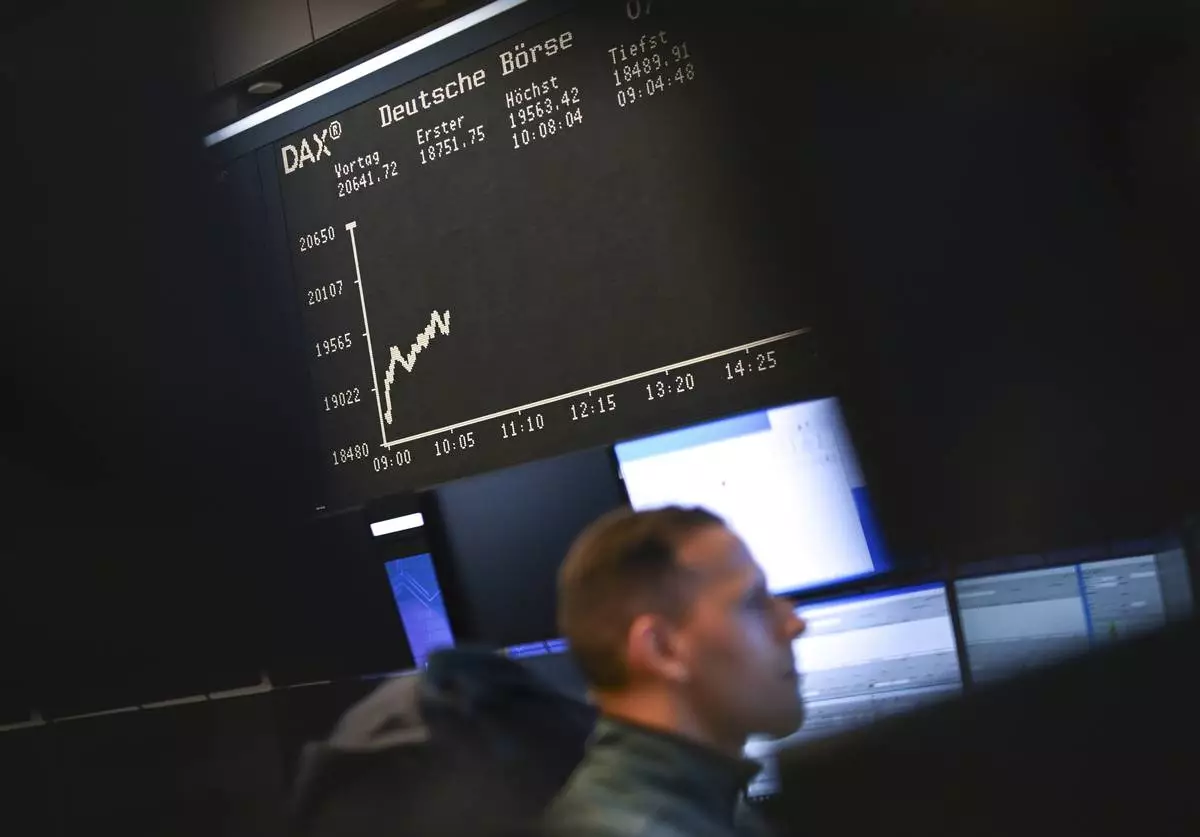
While a stock exchange trader sits in front of his monitors on the trading floor of the Frankfurt Stock Exchange, Germany, the display board with the Dax curve shows a value of less than 20,000 points. (Arne Dedert/dpa via AP)

Currency traders work near a screen showing the Korea Composite Stock Price Index (KOSPI), top left, and the foreign exchange rate between U.S. dollar and South Korean won, top center, at the foreign exchange dealing room of the KEB Hana Bank headquarters in Seoul, South Korea, Monday, April 7, 2025. (AP Photo/Ahn Young-joon)

An electronic stock board shows that Nikkei stock average dropped over 2,900 Japanese yen in Tokyo Monday, April 7, 2025. (Kyodo News via AP)

Currency traders work near a screen showing the Korea Composite Stock Price Index (KOSPI) and the foreign exchange rate between U.S. dollar and South Korean won, top right, at the foreign exchange dealing room of the KEB Hana Bank headquarters in Seoul, South Korea, Monday, April 7, 2025. (AP Photo/Ahn Young-joon)

A person walks past an electronic stock board in Tokyo Monday, April 7, 2025. (Kyodo News via AP)

Currency traders watch monitors near a screen showing the Korea Composite Stock Price Index (KOSPI), top left, and the foreign exchange rate between U.S. dollar and South Korean won, top center, at the foreign exchange dealing room of the KEB Hana Bank headquarters in Seoul, South Korea, Monday, April 7, 2025. (AP Photo/Ahn Young-joon)

US President Donald Trump appears on a television screen at the stock market in Frankfurt, Germany, Thursday, April 3, 2025. (AP Photo/Michael Probst)

A screen displays financial news as traders work on the floor at the New York Stock Exchange in New York, Thursday, April 3, 2025. (AP Photo/Seth Wenig)





















